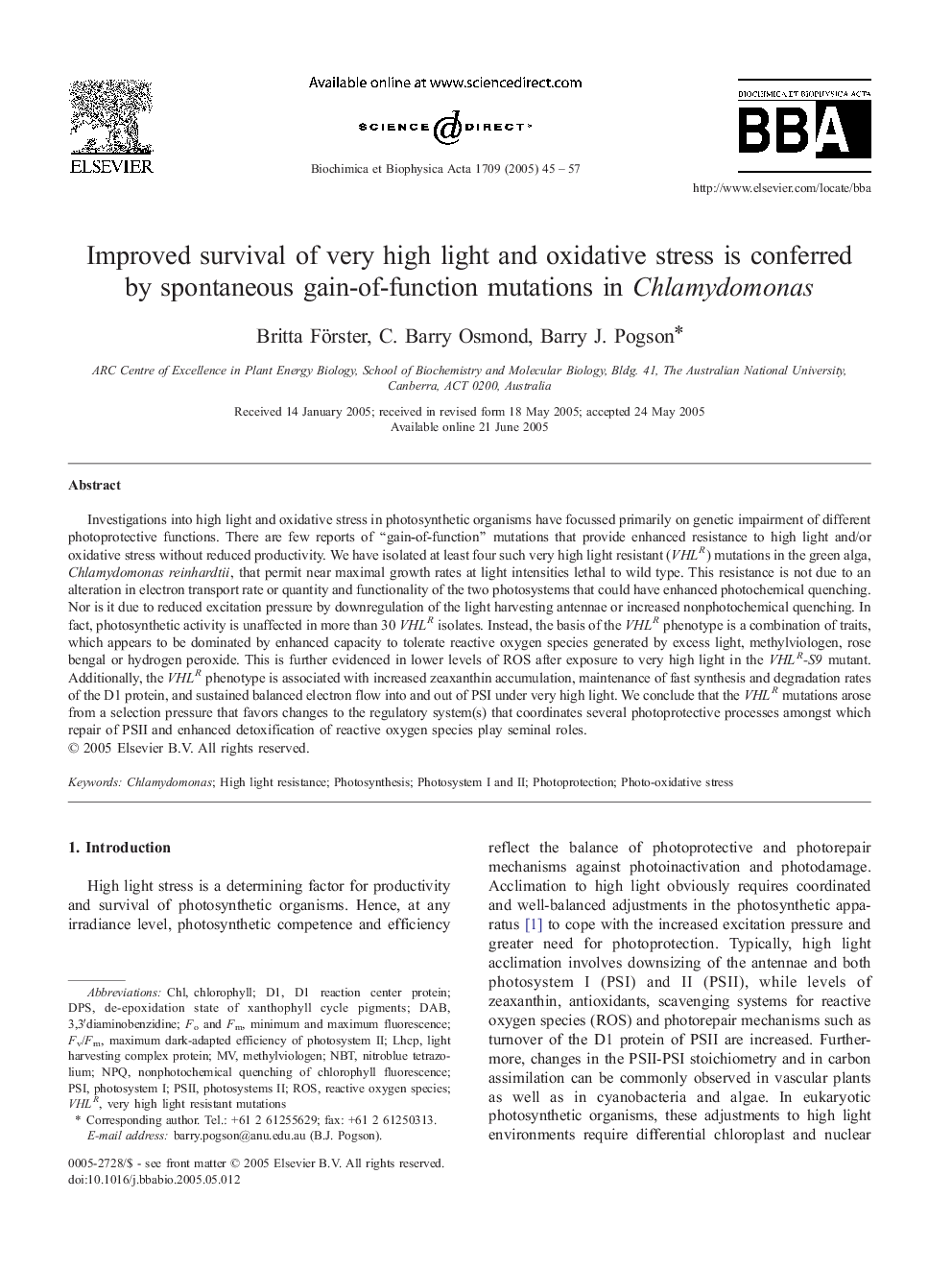| Article ID | Journal | Published Year | Pages | File Type |
|---|---|---|---|---|
| 10796106 | Biochimica et Biophysica Acta (BBA) - Bioenergetics | 2005 | 13 Pages |
Abstract
Investigations into high light and oxidative stress in photosynthetic organisms have focussed primarily on genetic impairment of different photoprotective functions. There are few reports of “gain-of-function” mutations that provide enhanced resistance to high light and/or oxidative stress without reduced productivity. We have isolated at least four such very high light resistant (VHLR) mutations in the green alga, Chlamydomonas reinhardtii, that permit near maximal growth rates at light intensities lethal to wild type. This resistance is not due to an alteration in electron transport rate or quantity and functionality of the two photosystems that could have enhanced photochemical quenching. Nor is it due to reduced excitation pressure by downregulation of the light harvesting antennae or increased nonphotochemical quenching. In fact, photosynthetic activity is unaffected in more than 30 VHLR isolates. Instead, the basis of the VHLR phenotype is a combination of traits, which appears to be dominated by enhanced capacity to tolerate reactive oxygen species generated by excess light, methylviologen, rose bengal or hydrogen peroxide. This is further evidenced in lower levels of ROS after exposure to very high light in the VHLR-S9 mutant. Additionally, the VHLR phenotype is associated with increased zeaxanthin accumulation, maintenance of fast synthesis and degradation rates of the D1 protein, and sustained balanced electron flow into and out of PSI under very high light. We conclude that the VHLR mutations arose from a selection pressure that favors changes to the regulatory system(s) that coordinates several photoprotective processes amongst which repair of PSII and enhanced detoxification of reactive oxygen species play seminal roles.
Keywords
Related Topics
Life Sciences
Agricultural and Biological Sciences
Plant Science
Authors
Britta Förster, C. Barry Osmond, Barry J. Pogson,
